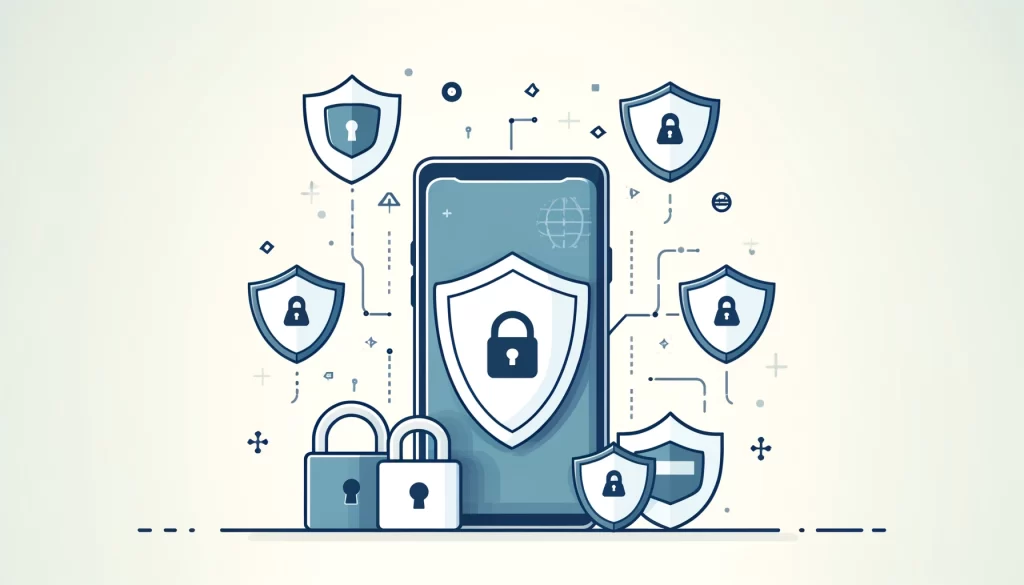By Adhip Ray, founder of WinSavvy.com
In today’s digital age, where mobile applications are an integral part of our daily lives, the significance of security in the app development process cannot be overstated.
As digital marketers and app developers, our responsibility extends beyond creating applications that meet the users’ needs for functionality and aesthetics.
We must also ensure that these apps are secure by design, protecting user data from potential threats and vulnerabilities. This article explores how marketing teams can advocate for and highlight the importance of security throughout the app development process, making it a key selling point in an increasingly competitive market.
Contents
Understanding the Landscape
Before we dive into strategies, it’s crucial to understand the landscape we’re operating in. Mobile applications store a wealth of personal information, from financial details to personal messages and photos. This makes them attractive targets for cybercriminals looking to exploit any vulnerability for their gain.
The repercussions of a security breach can be severe, including loss of customer trust, financial loss, and damage to the brand’s reputation.
Despite these risks, security often takes a backseat during app development, overshadowed by concerns over functionality, user experience, and time to market. This is where marketing teams can play a pivotal role, championing the cause of security and ensuring it is integrated into the app from the outset rather than being tacked on as an afterthought.
Championing Security as a Core Feature
Marketing teams can champion app security by framing it as a core feature of the product, not just a necessary evil. This involves:
- Educating Stakeholders: Start by educating all stakeholders, including developers, executives, and clients, about the importance of app security. Use real-world examples to highlight the potential consequences of security breaches and the benefits of secure app development practices.
- Integrating Security into the Brand Narrative: Craft a compelling brand narrative that positions your app as secure by design. Highlight your commitment to protecting user data as a key differentiator in your marketing materials, including your website, social media, and advertising campaigns.
- Leveraging Security Certifications: Obtain security certifications for your app and prominently display them in your marketing collateral. Certifications can serve as a trust signal, reassuring users and clients of your app’s security credentials.
- Creating Educational Content: Produce educational content that informs users about the security measures in place and how they can use the app safely. This can include blog posts, videos, and social media content that demystify app security for the average user.
- Showcasing Transparency: Be transparent about your app’s security features and any breaches that may occur. Use these incidents as opportunities to demonstrate your commitment to security and how you are taking steps to prevent future breaches.
Integrating Security into User Experience (UX) Design
One of the most effective ways to market app security is by seamlessly integrating it into the user experience (UX) design. Security should not feel like an add-on or a hindrance to the user but rather an integral part of the app’s functionality.
User-Centric Security Features
Design security features with the user in mind. Biometric authentication methods, such as fingerprint scanning or facial recognition, can offer robust security while enhancing user convenience.
Highlight these features in your marketing materials as examples of how your app prioritizes both security and user experience.
Transparent User Permissions
Clearly communicate why certain permissions are needed and how they enhance the app’s functionality or security. Use language that is easy to understand, avoiding technical jargon that may confuse users.
This transparency can build trust and reassure users about their privacy and data security.
Security Customization Options
Offer users customization options for security settings. Some users may prefer additional layers of security, while others might opt for a more streamlined experience.
Marketing the app’s flexibility in security settings can appeal to a broader audience.
Educational UX Elements
Incorporate educational elements into the UX design, such as tooltips or interactive guides, that inform users about security risks and best practices. This not only educates users but also reinforces the perception of your app as a trusted advisor on security matters.
Feedback Loops for Security Features
Implement mechanisms for users to provide feedback on security features directly within the app. This can include satisfaction surveys, suggestion boxes, or reporting tools for potential security issues. Integrate customer feedback regarding security into the development and marketing processes. This ensures that user concerns are addressed effectively while guiding future improvements. Highlighting this feedback loop in your marketing efforts demonstrates your commitment to listening to and acting on user concerns.
Highlighting this feedback loop in your marketing efforts demonstrates your commitment to listening to and acting on user concerns.
Marketing Strategies for Promoting App Security
Now, let’s explore some strategies marketing teams can employ to promote the importance of security in the app development process:
When developing user stories or personas, include security as a key concern for your users. This helps ensure that security is considered at every stage of the development process and is aligned with user expectations.
Partner with influencers and thought leaders in the cybersecurity and tech industries to talk about the importance of secure app development. This can help elevate the conversation around app security and reach a wider audience.
You should also participate in developer forums and conferences to discuss security best practices and the role of marketing in promoting secure app development. Engaging with the developer community can foster a culture of security within the organization and the industry at large.
Develop targeted marketing campaigns that address specific security concerns or highlight recent enhancements to your app’s security features. Tailoring your message to address current security trends or threats can make your marketing efforts more relevant and impactful.
Now, while you are emphasizing on these security features, try to get your customers to share their views on it as well. Embrace, ask for and share testimonials and case studies from users and clients who have benefited from your app’s security features. Social proof can be a powerful tool in convincing potential users of the value of security.
Building a Culture of Security
To effectively market the importance of security in the app development process, it’s essential to cultivate a culture of security within the organization. This culture empowers every team member, from developers to marketers, to prioritize security in their daily activities and decision-making processes.
Collaborative Security Planning
Involve marketing teams in security planning sessions. This cross-disciplinary approach ensures that security considerations inform marketing strategies and vice versa, creating a unified message about the importance of security.
Reward and Recognition Programs
Recognize and reward team members who contribute significantly to improving app security. This could include innovations in secure coding, successful identification of vulnerabilities, or effective security awareness campaigns. Rewards can motivate the team to maintain a high standard of security.
Open Communication Channels
Establish open channels of communication where team members can report security concerns without fear of reprisal. This transparency is crucial for identifying and addressing security issues promptly.
Customer Feedback Loops
Integrate customer feedback regarding security into the development and marketing processes. This feedback can provide valuable insights into user concerns and perceptions about app security, guiding future improvements.
Leveraging Technology to Promote Security
In the digital age, technology offers powerful tools for effectively marketing app security. Here are some technological strategies to consider:
- Interactive Security Features Guide: Develop an interactive guide or feature within the app that educates users about its security measures. This could include interactive tutorials, FAQs, or even a virtual tour explaining how user data is protected.
- Augmented Reality (AR) Experiences: Utilize AR to create engaging experiences that highlight your app’s security features. For example, an AR experience could visually demonstrate how data encryption works or how the app defends against cyber threats.
- Personalized Security Notifications: Implement a system for sending personalized security notifications to users. These notifications can inform users about recent security updates, tips for enhancing their security settings, and alerts about potential security issues.
- Social Media Engagement: Use social media platforms to run live Q&A sessions, webinars, or interactive polls focused on app security. This engagement can help demystify security concepts and gather community feedback on security features.
- Security Challenges and Competitions: Organize online security challenges or competitions that encourage users and developers to test the app’s security features. This not only helps identify potential vulnerabilities but also raises awareness about the importance of security.
Wrapping it up
The digital security landscape is constantly evolving, with new threats emerging and user expectations changing. To keep pace, marketing strategies must be agile, adapting to these changes swiftly.
Conduct regular analyses of the cybersecurity market and emerging threats. Use these insights to adjust your marketing strategies and messages, ensuring they remain relevant and responsive to current challenges.
Adopt an agile marketing approach, where campaigns are designed to be flexible and responsive to real-time data and feedback. This allows you to tweak messages quickly in response to new security developments or user concerns.
Marketing teams have the unique opportunity and responsibility to elevate the dialogue around security, transforming it from a technical requirement to a key differentiator that resonates with users and sets the app apart in a crowded marketplace.
Shahzad Ahmad Mirza is a web developer, entrepreneur, and trainer based in Lahore, Pakistan. He started his career in 2000 and founded his web development agency, Designs Valley, in 2012. Mirza also runs a YouTube channel, “Learn With Shahzad Ahmad Mirza,” where he shares his web programming and internet marketing expertise. He has trained over 50,000 students, many of whom have become successful digital marketers, programmers, and freelancers. He also created the GBOB (Guest Blog Posting Business) course, which teaches individuals how to make money online.




